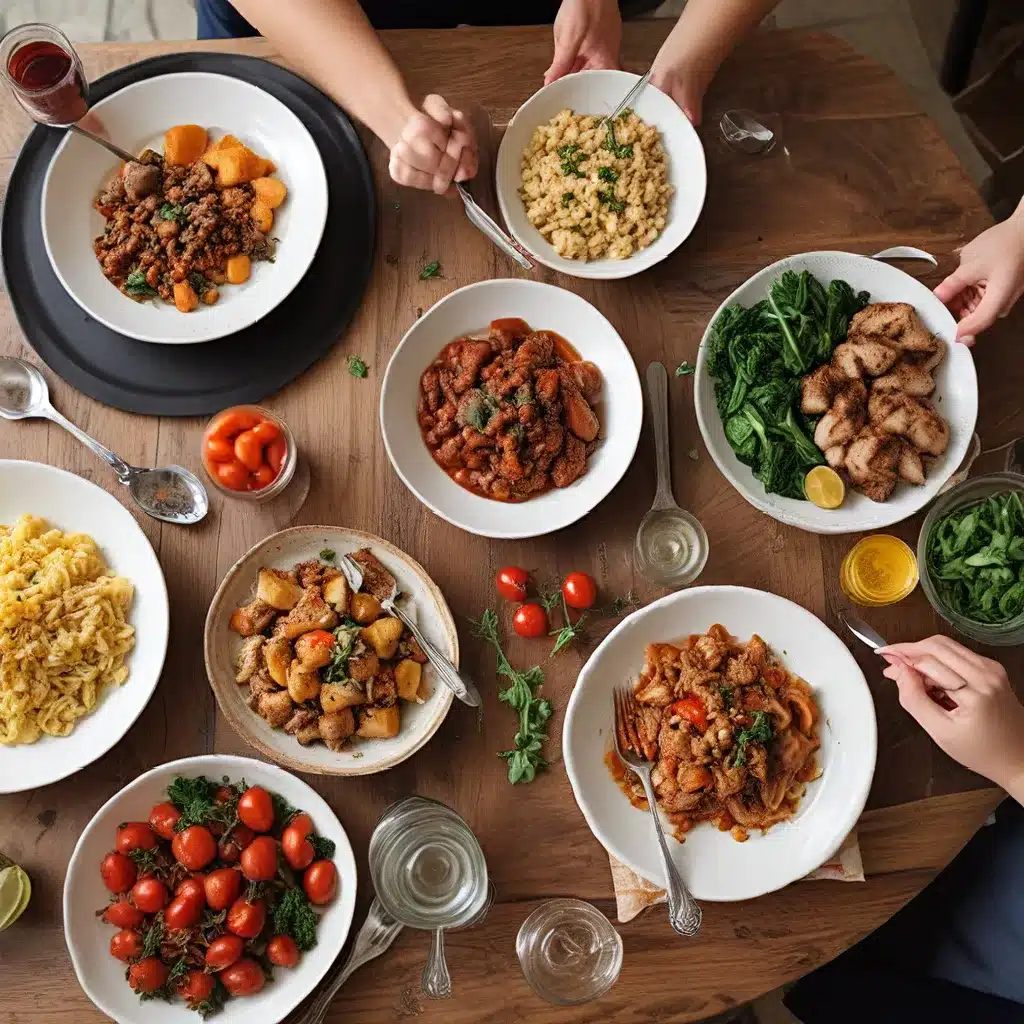
As a passionate home cook, I’ve always been fascinated by the way professional chefs can create such complex and captivating flavor profiles in their dishes. How do they manage to pack so many distinct tastes into a single bite? It’s a mystery that has long intrigued me, and one that I’ve been determined to crack.
Unlocking the Secrets of Taste Mastery
Recently, I stumbled upon a fascinating discussion on Reddit that shed some light on this culinary conundrum. The Redditor posed a seemingly simple question: “How does fine dining food get so many flavors?” The responses were illuminating, and they got me thinking about the fundamental principles of taste and how they can be applied in the home kitchen.
As it turns out, the secret lies in the concept of taste balancing. According to the experts, the human palate can detect five primary tastes: salty, sour, sweet, bitter, and umami. And just like a painter working with a limited palette, chefs must learn to expertly combine these “flavor notes” to create a harmonious and captivating dining experience.
The Whole Life Challenge provided some invaluable insights on this topic, explaining that while we may be familiar with the first four tastes, umami is the often-overlooked fifth taste that can make a big difference in the overall flavor profile. Umami, described as a “meatiness” or savory quality, is found in ingredients like oysters, beef, mushrooms, butter, and olive oil.
Armed with this knowledge, I set out to put taste balancing into practice in my own home-cooked meals. And let me tell you, the results have been nothing short of game-changing.
Painting with Flavors: The Artistry of Taste Balancing
Imagine a painter standing before a blank canvas, palette in hand, ready to bring their vision to life. Just as the artist must thoughtfully combine their primary colors to create a masterpiece, a chef must approach the flavors in their dish with the same level of care and consideration.
It’s all about finding the right balance. Sweet, sour, spicy, and bitter tastes can be used to complement and counterbalance each other, creating a dynamic and engaging flavor profile. And don’t forget about that elusive umami – the “sixth man” of the taste team that can add depth and richness to any dish.
I’ve found that the key to successful taste balancing is to think of each component of a meal as a brush stroke on the canvas. By carefully considering how the different flavors will interact and play off one another, I can create a truly captivating culinary experience.
For example, let’s say I’m making a salad. I might start with a base of peppery arugula (bitter) and sweet apples, then dress it with a vinaigrette that incorporates sour vinegar, salty soy sauce, and a umami-rich ingredient like Parmesan cheese. The result is a harmonious blend of tastes that tantalizes the palate and leaves you craving more.
Or, if I’m whipping up a stir-fry, I might balance the salty soy sauce and umami-packed mushrooms with a touch of sweetness from honey or brown sugar, a sprinkle of spicy chili flakes, and a squeeze of sour lime juice. The interplay of these flavors creates a dynamic and satisfying dish that’s sure to impress.
The Joy of Experimentation
One of the most exciting aspects of taste balancing is the element of discovery. As I continue to explore the endless possibilities of flavor combinations, I find myself constantly surprised and delighted by the results.
Sometimes, I’ll start with a seemingly simple ingredient, like tomatoes, and then set out to build a complex and layered soup. I might begin by roasting the tomatoes to concentrate their sweet and umami notes, then add a touch of acidity with a splash of vinegar or lemon juice. A sprinkle of salt and a pinch of spice can take the dish to new heights, while a dollop of creamy yogurt or sour cream can provide a cooling contrast.
The process of tasting and adjusting, tweaking and experimenting, is endlessly engaging. It’s like solving a puzzle, with each new flavor combination presenting a fresh challenge and a chance to unlock even more culinary delights.
Embracing the Journey of Taste Exploration
As I’ve delved deeper into the world of taste balancing, I’ve come to realize that the true joy of home cooking lies not in the destination, but in the journey. It’s about embracing the process of discovery, pushing the boundaries of your palate, and constantly challenging yourself to create new and exciting flavor profiles.
Sure, there may be times when a dish doesn’t quite hit the mark, but that’s all part of the fun. It’s an opportunity to learn, to grow, and to become an even more intuitive and confident home cook.
And the best part? You don’t have to be a Michelin-starred chef to master the art of taste balancing. With a little bit of practice and a whole lot of curiosity, anyone can transform their home-cooked meals into culinary masterpieces.
So, what are you waiting for? Grab your apron, your taste buds, and your sense of adventure, and let’s embark on a flavorful journey together. The possibilities are endless, and the rewards are truly delicious.

